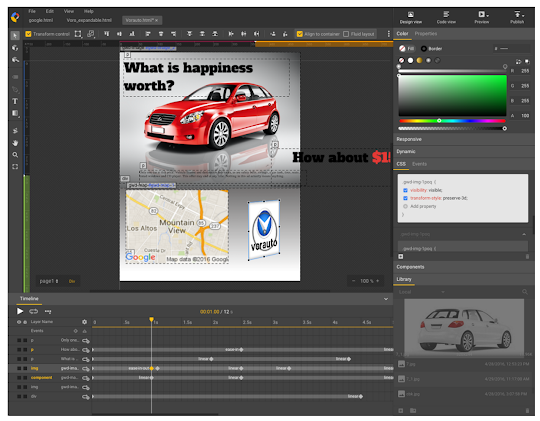People want great experiences wherever they’re consuming content – on the web, in apps, on every screen. Savvy publishers have responded by building smart, responsive websites and new app interaction models. But improving the content experience alone is not enough. Publishers need to evolve their advertising as well, from boxy banners to flexible and contextually relevant native ads that scale. To help them do that, we’re extending our native ads for apps solution to work across all screens – on the web and in apps – making it easier for publishers to set up, deliver, and measure directly-sold native ads everywhere.
Reducing complexity to scale beautiful native ads across screens
Running native ads across all of a publisher’s digital inventory has, until now, been an operationally complex process requiring hours spent manually coding and compiling individual ad creatives from advertiser-provided assets.
Now, DoubleClick for Publishers supports native creatives that easily scale and adapt to different content layouts on different screens. Instead of providing rigid, pre-defined ad creatives, advertisers can give publishers components that make up their ads – image, headline, copy, etc. Publishers set up a central library of native styles suited to their content and DoubleClick automatically compiles the creative from the components, applying the right style based on where users are consuming content.
These native creatives can run both in traditional banner slots and a new, responsive fluid ad slot in Google Publisher Tag and the Google Mobile Ads SDK. And ActiveView and third-party measurement are fully supported.
Flexing The New York Times’ native advertising strategy
Last year, The New York Times launched “Flex Frames”, a new suite of natively styled ads developed in-house. The goal was to extend innovative storytelling and beautiful user experiences to ads across all of their content platforms.
“We think better designed ads that play off the functionality and user experience of our site will allow us to grow our business.”
-Sebastian Tomich, Senior Vice President of Advertising & Innovation, The New York Times
.
Flex Frames was a hit with users and advertisers alike: CTRs were up 4-5X compared to regular 300x250 in-line units, and advertisers jumped at the chance to take advantage of new in-line video inventory.
Scaling Flex Frames, however, proved challenging. The team was dedicating too many hours to coding and compiling ads for review by advertisers.
The New York Times turned to DoubleClick’s new solution to serve these native ads more efficiently wherever their users may be – in apps, on the web, or even on AMP pages. By overlaying audience data, the team is able to optimize the creative presentation to match the editorial experiences that individual readers respond to the most, delivering compelling user experiences and great results.
“Performance on mobile is surpassing desktop, and that’s a big opportunity. We see our partnership with Google and DoubleClick as the answer to scale and that’s been the biggest challenge for advertisers trying to innovate today,” says Tomich.

The New York Times isn’t the only publisher benefitting from this technology. Today, more than 200 publishers globally, including Aller Media in Norway and Grupo Expansion in Mexico, are using DoubleClick to deliver fully responsive native ads across all their web and app properties.
DoubleClick’s goal has always been to help publishers thrive and deliver great advertising experiences with the least complexity. With our growing investment in native solutions for publishers, we’re excited to power ad experiences that are more engaging and seamless for users everywhere, unlocking brand spend in a way that’s sustainable and scalable.
Learn more about Native Ads on DoubleClick in our Help Center and experience their responsiveness in this interactive demo.
 | Posted by Tom Bender
Product Manager, DoubleClick |










